Bach Ma Temple, often referred to as the Temple of the White Horse, stands as a magnificent testament to Vietnam’s rich tapestry of history, legend, and spirituality. Situated in the vibrant heart of Hanoi’s Old Quarter, the temple is not just an architectural marvel but also a hub of historical narratives and cultural significance. This article delves into the multifaceted dimensions of Bach Ma Temple, its storied past, architectural splendor, religious importance, and its undeniable cultural impact on the local community and beyond.
History and Origins

Early construction and purpose: 9th century
Bach Ma Temple was initially constructed in the 9th century during the early days of the Dai La Citadel, now modern-day Hanoi. It was built to honor Long Do, the river god, a deity deeply revered by the ancient Vietnamese people. The temple’s primary purpose was spiritual, serving as a sacred site where locals could seek blessings and protection from Long Do. Historically, it also held a military significance: the site where Dinh Bo Linh, who later became Emperor Dinh Tien Hoang, prayed for divine support before his decisive campaigns in the 10th century. The blending of spiritual reverence and militaristic strategy marked the temple’s unique role in Vietnam’s history.
The White Horse Legend and King Ly Thai To: 11th century
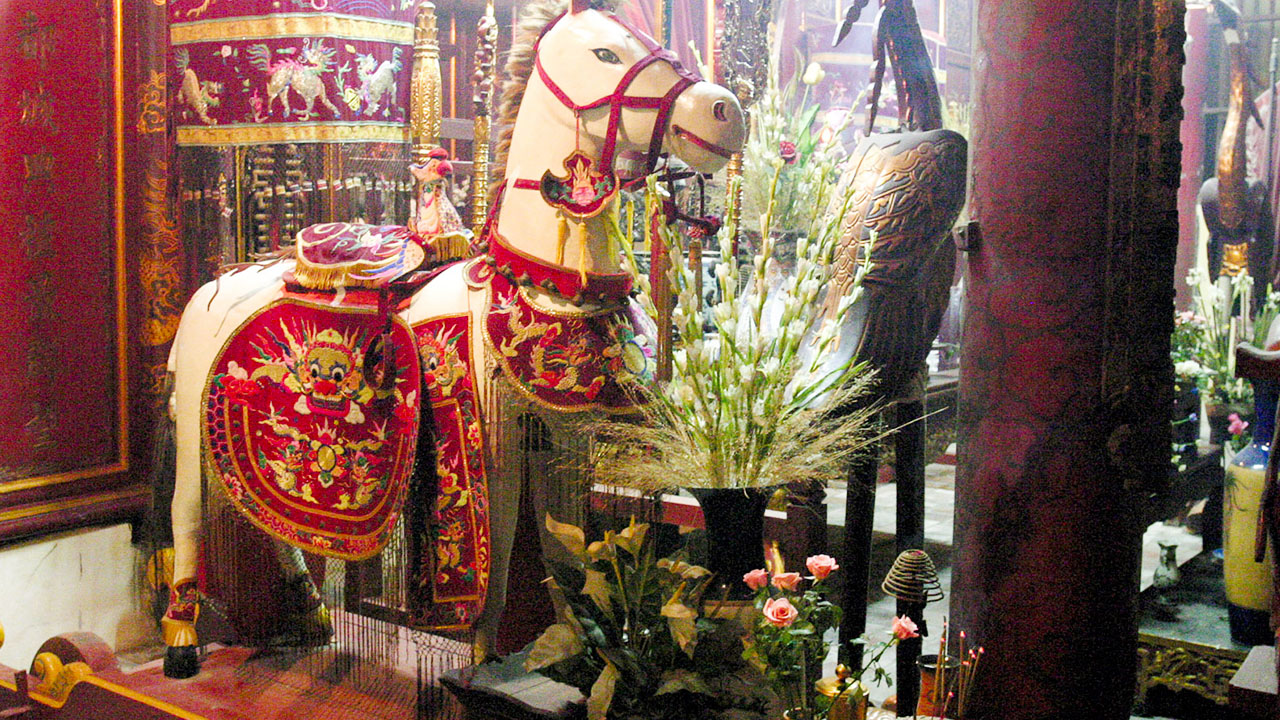
The 11th-century renovations by Emperor Ly Thai To were monumental in cementing Bach Ma Temple’s legendary status. According to local lore, King Ly Thai To had a vision of a white horse emerging from the temple, guiding him to the precise location for constructing the new city walls of Thang Long (modern-day Hanoi). This divine horse, believed to be a manifestation of the god Long Do, played a pivotal role in the founding legend of Hanoi. To honor this mystical guide, the emperor built the temple as a tribute to the white horse and instituted the temple as a focal point of the city’s spiritual and defensive framework.
Changes in name and purpose throughout history
Over the centuries, the temple has witnessed several name changes and shifts in its role and purpose, reflecting the broader historical narratives and societal transformations in Vietnam. Initially named “Long Do,” the temple underwent significant changes in 1010 when Emperor Ly Thai To officially renamed it “Bach Ma Linh Tu,” highlighting the central legend of the white horse. Through various dynasties, the temple’s role oscillated between a place of spiritual worship and a historical monument. Each era contributed unique elements to its architecture, rituals, and cultural significance, ultimately embedding the temple deeply in Vietnam’s national identity.
Architectural styles and influences
Bach Ma Temple showcases an extraordinary blend of Vietnamese and Chinese architectural styles, echoing the cultural interchanges prevalent in historical Vietnam. Divided into three main sections—the entrance gate, the front hall, and the inner sanctum—the intricate architecture reflects traditional Vietnamese aesthetics infused with Chinese decorative motifs. This synthesis of styles is evident in the use of symbolic imagery such as lotuses, phoenixes, and the “eight treasures,” which adorn the wooden carvings and structural designs. The temple’s truss system not only provides structural stability but also adds to its aesthetic appeal, making it a captivating landmark that bridges different cultural and historical epochs.
Architecture and Design
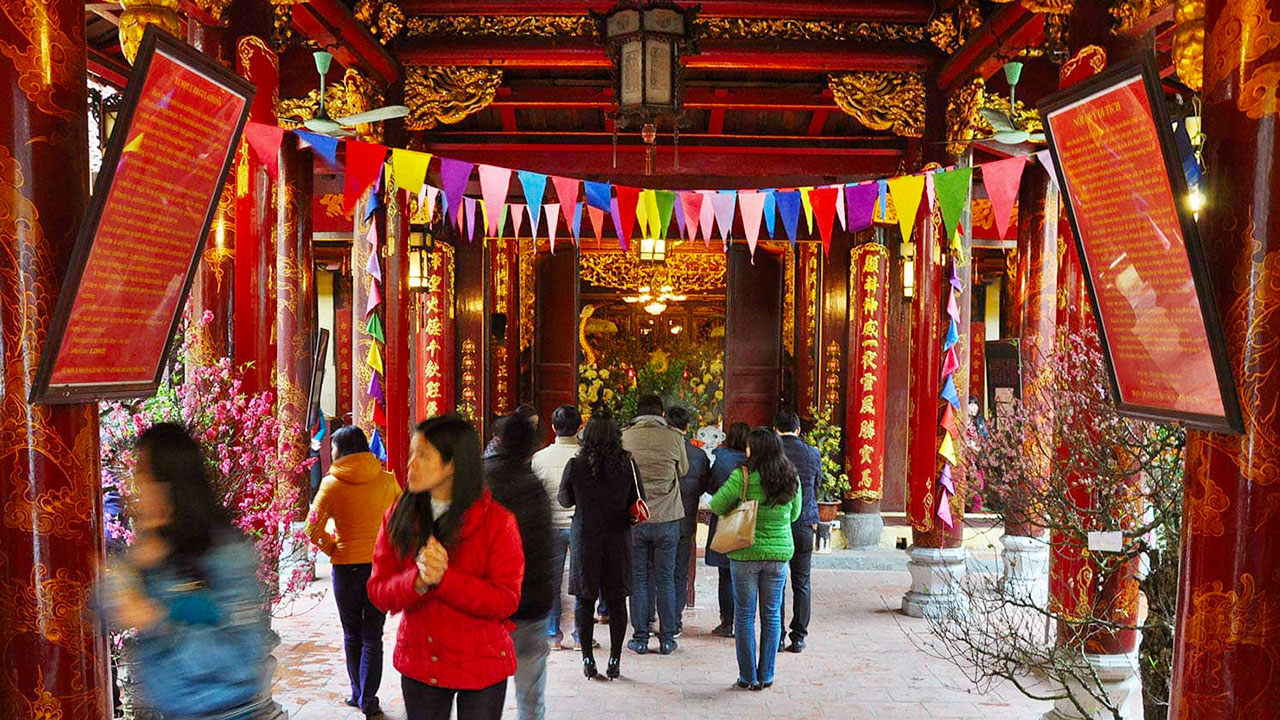
Layout and Symbolism
The layout of Bach Ma Temple is a testament to the ancient principles of feng shui, embodying a harmonious alignment with natural elements. The temple’s strategic positioning and architectural flow are designed to enhance the spiritual journey of visitors, from the entrance gate through to the main hall and inner sanctum. The alignment encapsulates a smooth transition, symbolizing the seamless connection between the earthly and the divine. The architecture of the temple integrates Vietnamese and Chinese influences, showcasing the cultural harmony Vietnam has maintained whilst creating a distinct architectural identity.
Intricate Carvings and Decorations
Bach Ma Temple is renowned for its exquisite carvings and ornate decorations. The entrance gate is adorned with intricate designs featuring dragons and phoenixes—synonymous with power, strength, and prosperity in both Vietnamese and Chinese cultures. Inside, the temple exhibits splendid woodwork, characterized by delicate carvings depicting motifs from Vietnamese mythology and historical narratives. The use of vibrant colors and gold accents enhances the visual grandeur, making the temple a feast for the eyes. Every corner, wooden pillar, and altar is meticulously decorated—telling a story, blessing the worshippers, and preserving the rich cultural heritage of Vietnam.
Materials Used in Construction
Traditional Vietnamese architecture heavily relies on locally sourced materials suited to the tropical climate. Bach Ma Temple employs a combination of wood, bamboo, and terracotta tiles, carefully chosen to withstand weather conditions while harmonizing with the natural surroundings. Wood, especially ironwood, is prominently used for its durability and workability, allowing intricate carvings and structural innovations. Bamboo, another crucial element, supports lightweight structures, while terracotta tiles adorn roofs, providing both aesthetic value and functional cooling. These materials underline the temple’s connection to nature and the environment, embodying a historical continuity of Vietnamese architectural practices.
Influence of Traditional Vietnamese Architecture
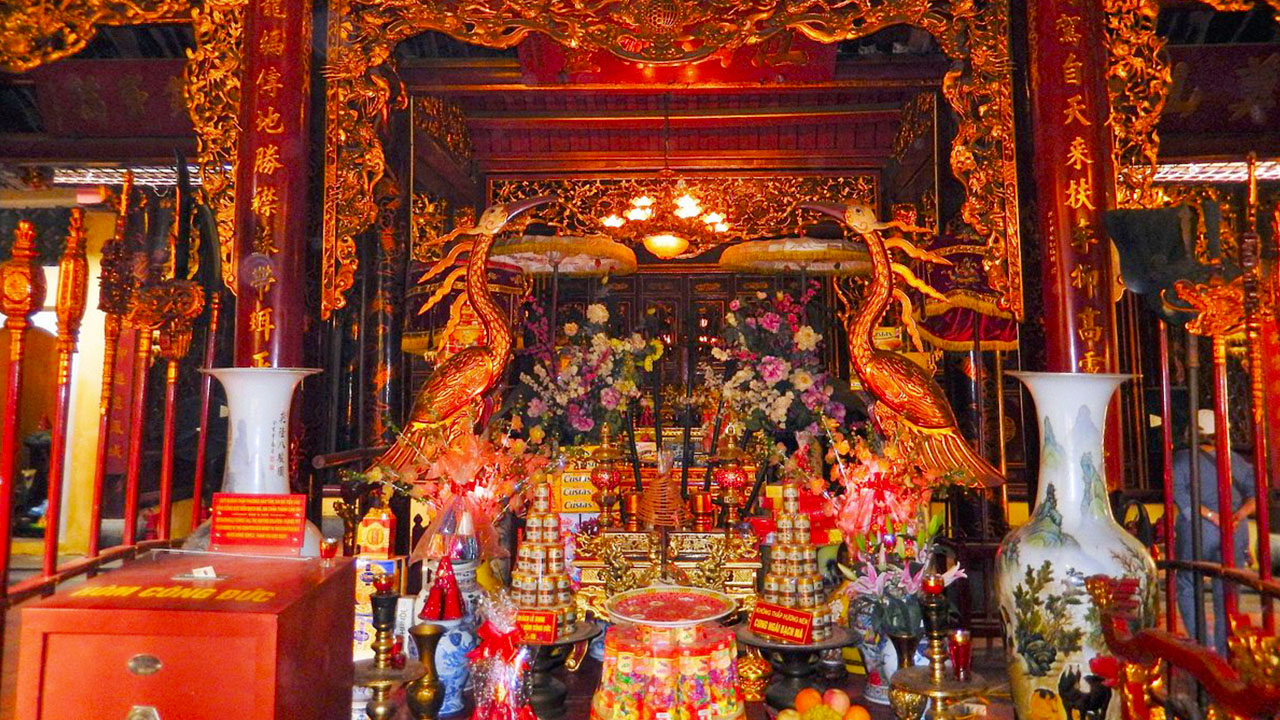
Bach Ma Temple stands as a quintessential example of traditional Vietnamese architecture, seamlessly integrated with Chinese elements. The curved roofs, ornate carvings, and usage of auspicious red and gold represent a blend of cultural aesthetics. This fusion reflects historical cultural exchanges and the adaptability of Vietnamese architectural solutions to foreign influences while retaining a unique identity. Temples like Bach Ma influenced neighboring structures in Hanoi and across Vietnam, forming a cohesive architectural language that speaks of resilience, spirituality, and artistic mastery. The temple’s design continues to inspire contemporary buildings, preserving and promoting traditional Vietnamese aesthetics in modern architecture.
Religious Significance
Deity Honored: Long Do, the River God
At the heart of Bach Ma Temple’s religious significance is the worship of Long Do, the river god. Long Do, considered the guardian deity of ancient Hanoi, holds immense spiritual importance for locals. The deity’s association with water and rivers symbolizes life, sustenance, and protection against natural calamities. Long Do’s divine presence in the temple provides a spiritual anchor for worshippers, who pray for blessings, protection, and prosperity. The temple, through its veneration of Long Do, encapsulates the deep-seated reverence for natural deities in Vietnamese spirituality, reflecting the cultural ethos of living in harmony with nature.
Role in Religious Ceremonies and Rituals
Bach Ma Temple plays a pivotal role in various religious ceremonies and rituals. It is a focal point for practicing spiritual traditions and conducting community rituals. The temple witnesses numerous ceremonies, from daily offerings to elaborate annual festivals. One of the most celebrated events is the Bach Ma Temple Festival, which takes place on the 12th and 13th days of the second lunar month. This festival includes palanquin processions, dragon and lion dances, and other traditional performances. These ceremonies are not only religious observances but also cultural expressions, bringing the community together in shared spiritual and cultural heritage.
Annual Festivals and Celebrations
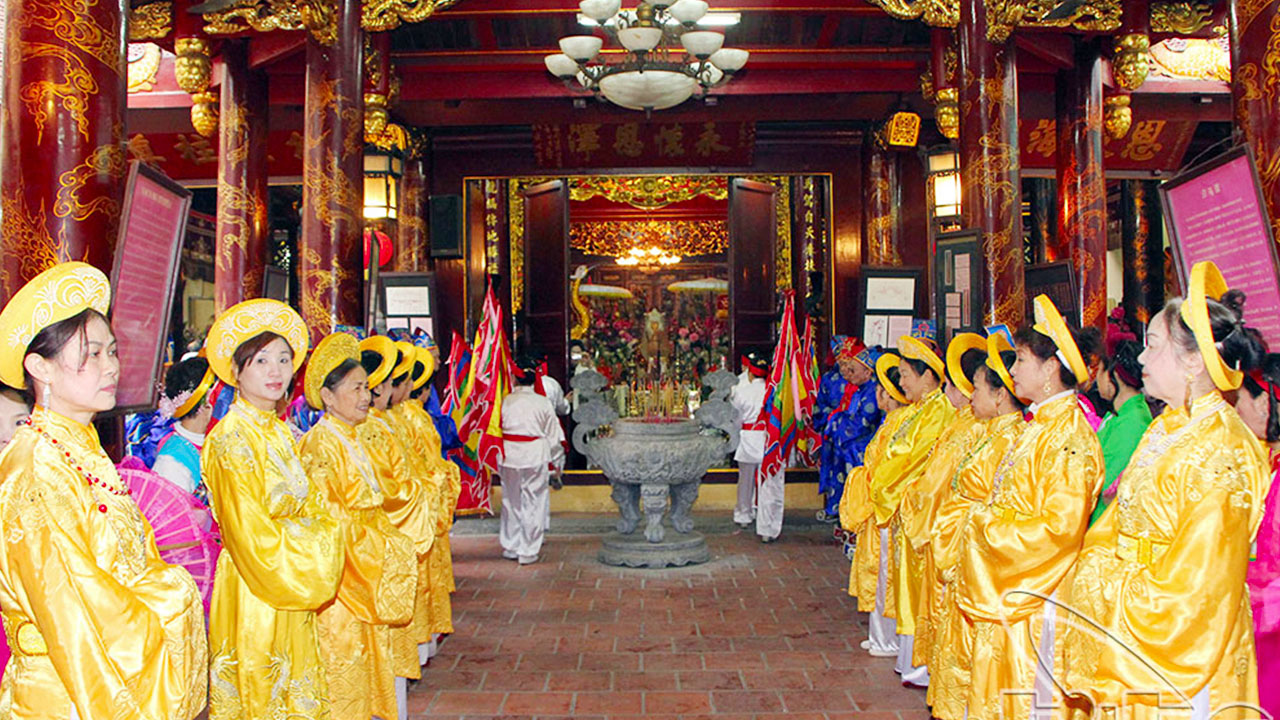
The annual festivals and celebrations at Bach Ma Temple are vibrant spectacles that encapsulate the temple’s religious and cultural essence. The Bach Ma Temple Festival, particularly, stands out—celebrated grandly with various ritualistic and cultural activities. This festival marks the transition from winter to spring, symbolizing renewal and prosperity. Activities during the festival include traditional Vietnamese folk games, cultural performances, and religious rites, deeply interwoven with the community’s daily life. The temple’s rituals and celebrations provide not only spiritual fulfillment to the participants but also an immersive cultural experience for visitors, showcasing Vietnam’s rich traditional heritage.
Significance to Local Communities
For the local communities, Bach Ma Temple is more than a religious site; it is a cultural and social hub. The temple serves as a place for communal bonding, where people gather for spiritual activities, festivals, and cultural events. It plays a crucial role in maintaining the community’s cultural continuity and fostering a sense of belonging and unity. The temple’s religious significance extends beyond individual spirituality to encompass community well-being, social cohesion, and cultural preservation. The vibrant activities and the community’s active participation during festivals are testimonies to the temple’s integral role in the lives of the local people.
Cultural Impact

Symbol of National Identity and Pride
Bach Ma Temple serves as a profound symbol of national identity and pride for the Vietnamese people. As the oldest temple in Hanoi, it stands as a testament to the city’s historical and cultural evolution. The temple’s architecture, legends, and historical relevance encapsulate Vietnam’s rich heritage, making it a significant national monument. The temple is not merely a religious site but a cultural beacon that represents Vietnam’s resilience, spirituality, and artistic prowess. By preserving and honoring Bach Ma Temple, Vietnam showcases its cultural legacy, instilling a sense of national pride and identity among its people and visitors.
Preservation Efforts and Restoration
Preserving Bach Ma Temple has been a priority to safeguard Vietnam’s cultural legacy. Over the years, extensive restoration work has been undertaken to maintain the temple’s structural integrity and architectural grandeur. These efforts ensure that the temple’s historical and artistic value is preserved for future generations. The temple houses numerous ancient artifacts, stelae, and documents recording its history, worship rituals, and past restorations. Notable preservation efforts include the meticulous restoration of carved wooden structures and the conservation of ancient relics and royal titles from various Vietnamese dynasties. Recognized as a national historical relic, the temple’s preservation reflects the commitment to maintaining Vietnam’s rich cultural heritage.
Educational and Research Value
Bach Ma Temple is of immense educational and research value, providing scholars and historians with invaluable insights into Vietnam’s past. The temple’s architecture, inscriptions, and artifacts are a treasure trove for researchers delving into Vietnam’s cultural practices, historical events, and societal norms. Educational institutions and research organizations often collaborate on studies related to the temple’s historical significance, architectural styles, and conservation methods. The temple also serves as a vital resource for academic curricula, enriching the understanding of Vietnam’s heritage among students and researchers alike. Through these educational endeavors, Bach Ma Temple contributes to the continued exploration and appreciation of Vietnamese history and culture.
Tourism and Economic Impact
Bach Ma Temple plays a significant role in boosting local tourism and thereby the economy. The temple attracts visitors from around the world, drawn by its historical significance, architectural beauty, and cultural vibrancy. Tourists not only explore the temple but also engage with the broader cultural landscape of Hanoi’s Old Quarter. This influx of visitors supports local businesses, including souvenir shops, eateries, and accommodations, fostering economic growth in the area. Moreover, cultural tourism centered around Bach Ma Temple helps generate employment opportunities and promotes the overall development of the community, ensuring the sustainable preservation of the temple’s cultural and historical legacy.
Visiting Bach Ma Temple Hanoi
Location and Getting There
Bach Ma Temple is located at 76 Hang Buom Street, in the bustling Old Quarter of Hanoi, Vietnam. The temple’s central location makes it easily accessible from various parts of the city. Visitors can get to the temple by a variety of means:
- Walking: The temple is within walking distance from other popular landmarks in the Old Quarter, such as Hoan Kiem Lake, Ma May Street.
- Public Transportation: Buses and taxis frequently service the area. Major bus routes passing through Hang Buom Street provide a convenient option for visitors using public transport.
- Taxi/Grab: Using ride-hailing services like Grab or traditional taxis is also convenient, especially for visitors unfamiliar with the city’s layout.
Opening Hours and Entrance Fee
Bach Ma Temple is open daily, allowing visitors ample time to explore this historical site. The specific visiting hours are:
- Morning: 8:00 AM to 11:00 AM
- Afternoon: 2:00 PM to 8:00 PM
Notably, the temple does not charge an entrance fee, making it accessible to everyone. This open access underscores the temple’s role as a communal spiritual and cultural haven for both locals and tourists.
| Opening Hours | Morning | Afternoon |
|---|---|---|
| Daily | 8:00 AM – 11:00 AM | 2:00 PM – 8:00 PM |
Dress Code and Etiquette
Visitors to Bach Ma Temple should adhere to certain dress code and etiquette guidelines to respect the sanctity of the religious site:
- Dress Code:
- Wear formal, polite, and decent clothing.
- Avoid attire with cut-out details or overly revealing clothing.
- Traditional or modest clothing is preferred.
- Etiquette:
- Refrain from smoking within the temple grounds.
- Follow common courtesy when speaking, touching, and behaving in the temple.
- Be mindful of the sacred nature of the place, maintaining a respectful and quiet demeanor.
These guidelines ensure that all visitors, whether local or foreign, honor the spiritual atmosphere and the cultural significance of the temple.
Things to See and Do
Bach Ma Temple offers a plethora of experiences for visitors, combining spiritual, cultural, and historical elements. Some key highlights include:
- Admire Decorative Artistry: The temple is filled with intricate carvings and decorations, showcasing ancient Vietnamese craftsmanship.
- Annual Festival: Visit during the annual Bach Ma Temple Festival to witness traditional ceremonies, cultural performances, and folk games.
- Explore Ancient Relics: Inside the temple, discover altars, imperial titles, ancient weapon samples, stone steles, metal bells, and palanquins, each telling a story of Vietnam’s rich past.
- Architectural Appreciation: The temple’s architecture, reflecting the Nguyen Dynasty style with its wooden frame and intricate decorations, is a sight to behold.
- Nearby Attractions: Extend your visit to explore prominent nearby sites like Hoan Kiem Lake, Dong Xuan Market, and the Thang Long Water Puppet Theater.
Nearby Attractions and Activities
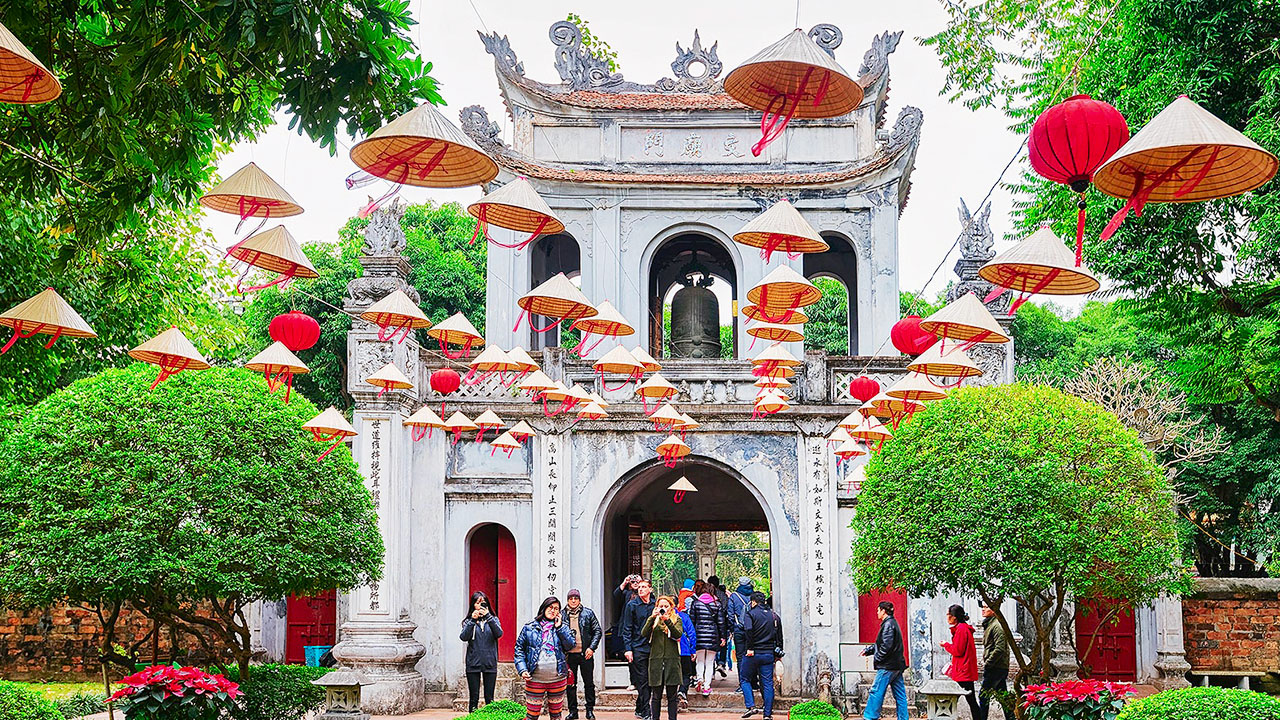
Bach Ma Temple’s location in Hanoi’s Old Quarter makes it an ideal starting point to explore several nearby attractions and engage in various activities:
- Dong Xuan Market: Just a short walk away, this market is perfect for shopping and sampling Vietnamese street food.
- Hoan Kiem Lake: A picturesque spot for strolling and people-watching, known for its iconic red bridge and Ngoc Son Temple.
- Temple of Literature: Vietnam’s first university, offering insights into the country’s educational history and culture.
- Hanoi Old Quarter Cultural Exchange Center: Offering exhibits on Hanoi’s history and culture, located just 200 meters from the temple.
- Thang Long Water Puppet Theater: Experience traditional Vietnamese water puppetry, located about 700 meters from the temple.
Activities:
- Attend Festivals: Participate in the Bach Ma Temple Festival and other religious ceremonies.
- Architectural and Cultural Exploration: Enjoy the serene atmosphere, admire the architecture, and explore the temple’s historical artifacts.
- Relax and Reflect: Take in the peaceful ambiance of the temple, providing a break from the bustling city life outside.
Nearby Attractions:
| Attraction | Description |
|---|---|
| Dong Xuan Market | A bustling market, ideal for shopping and trying street food. |
| Hoan Kiem Lake | A scenic lake with an iconic red bridge, perfect for a leisurely stroll. |
| Temple of Literature | Vietnam’s oldest university, offering historical and cultural insights. |
| Hanoi Old Quarter Cultural Exchange Center | Exhibits and events showcasing Hanoi’s cultural heritage. |
| Thang Long Water Puppet Theater | Experience traditional water puppet performances. |
In conclusion, Bach Ma Temple is not only a historical and architectural gem but also a vibrant embodiment of Vietnamese culture and spirituality. From its rich history and intricate architecture to its religious significance and cultural impact, the temple offers a multifaceted experience that resonates with both locals and visitors. By preserving such heritage sites, Vietnam continues to celebrate its past while educating and inspiring future generations.

